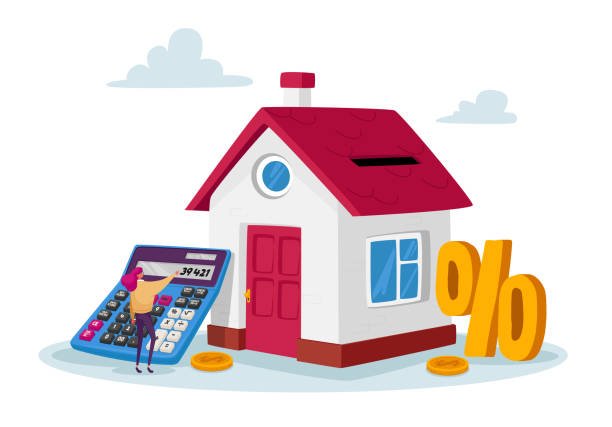Introduction
Refinancing a mortgage is a strategic financial move that homeowners often consider to optimize their mortgage terms, lower interest rates, or access equity for various purposes. However, the decision to refinance is not one-size-fits-all, and understanding when and how to refinance is crucial. This comprehensive guide explores the ins and outs of mortgage refinancing, providing insights into the reasons for refinancing, the types of refinancing options available, the qualification process, and how to calculate the costs and potential savings.
When to Refinance
Lowering Interest Rates
One of the primary reasons homeowners choose to refinance is to take advantage of lower interest rates. If market interest rates have decreased since the initial mortgage was secured, refinancing can lead to substantial savings over the life of the loan. Monitoring interest rate trends and acting when rates are favorable is key to maximizing this potential benefit.
Reducing Monthly Payments
Refinancing to secure a lower interest rate can result in reduced monthly mortgage payments. This can free up funds for other financial goals, such as saving for emergencies, investing, or contributing to retirement accounts. However, it’s essential to consider the costs associated with refinancing to ensure that the potential savings justify the process.
Shortening the Loan Term
Some homeowners refinance to transition from a longer-term mortgage (e.g., 30 years) to a shorter-term mortgage (e.g., 15 years). While this may increase monthly payments, it often leads to significant interest savings over the life of the loan. Shortening the loan term can be particularly appealing for those looking to build home equity faster and pay off their mortgage sooner.
Switching from Adjustable to Fixed Rate
Homeowners with adjustable-rate mortgages (ARMs) may choose to refinance to a fixed-rate mortgage to lock in a stable interest rate. This provides protection against future interest rate increases and ensures predictable monthly payments. This can be advantageous, especially if the homeowner anticipates rising interest rates in the market.
Tapping into Home Equity
Refinancing also allows homeowners to access their home equity through a cash-out refinance. This involves borrowing more than the outstanding mortgage balance and receiving the excess funds in cash. Homeowners often use this option for home improvements, debt consolidation, education expenses, or other significant financial needs.
Eliminating Private Mortgage Insurance (PMI)
Homeowners who initially made a down payment of less than 20% may be paying private mortgage insurance (PMI). As the home’s value increases or the mortgage balance decreases, refinancing can help eliminate the need for PMI, leading to reduced monthly payments.
Types of Refinancing
Rate-and-Term Refinancing
Rate-and-term refinancing involves replacing the current mortgage with a new one, often with a lower interest rate or a different term. This type of refinancing focuses on optimizing the loan’s interest rate and structure without changing the loan amount significantly.
Cash-Out Refinancing
Cash-out refinancing allows homeowners to borrow more than the outstanding mortgage balance and receive the excess funds in cash. The new mortgage amount includes the existing loan balance and the additional funds. This option is suitable for those looking to tap into their home equity for various purposes.
Streamline Refinancing
Streamline refinancing is a simplified process offered by certain loan programs, such as FHA and VA loans. It typically involves less documentation and paperwork, making it a faster and more straightforward option for eligible borrowers. Streamline refinancing is often used to secure lower interest rates without a substantial change to the loan terms.
Qualifying for Refinancing
Credit Score and Credit History
Similar to the initial mortgage application, credit scores play a crucial role in refinancing eligibility. Lenders prefer borrowers with a good credit history and a solid credit score. A higher credit score increases the chances of securing a lower interest rate and more favorable loan terms.
Loan-to-Value (LTV) Ratio
The loan-to-value ratio, calculated by dividing the loan amount by the appraised value of the home, is another essential factor in refinancing. Lenders often prefer lower LTV ratios, and homeowners with more equity in their homes are generally viewed more favorably.
Debt-to-Income (DTI) Ratio
Lenders assess a borrower’s debt-to-income ratio to ensure that the monthly mortgage payments align with the borrower’s overall financial capacity. A lower DTI ratio increases the likelihood of refinancing approval, as it indicates a more manageable financial situation.
Home Appraisal
A home appraisal is typically required during the refinancing process to determine the current market value of the property. The appraised value influences the loan amount, the loan-to-value ratio, and the overall feasibility of the refinancing.
Employment and Income Verification
Lenders verify employment and income information to ensure that the borrower’s financial situation is stable and reliable. Consistent income and employment history positively impact the refinancing application.
The Refinancing Process
Determine Your Goals
Before embarking on the refinancing process, homeowners should clearly define their goals. Whether it’s reducing monthly payments, accessing home equity, or shortening the loan term, having specific objectives helps guide the refinancing decisions.
Shop Around for Lenders
Not all lenders offer the same terms and conditions for refinancing. It’s advisable to shop around and obtain quotes from multiple lenders to compare interest rates, closing costs, and other terms. Online tools and mortgage brokers can assist in this comparison process.
Gather Necessary Documentation
Similar to the initial mortgage application, refinancing requires documentation such as pay stubs, tax returns, bank statements, and proof of assets. Having these documents organized and readily available streamlines the refinancing process.
Submit the Application
Once a suitable lender is selected, the homeowner submits a refinancing application. The application includes personal and financial information, and the lender may request additional documentation during the review process.
Home Appraisal
After receiving the application, the lender orders a home appraisal to assess the property’s current market value. The appraised value influences the loan amount and the loan-to-value ratio, crucial factors in the refinancing decision.
Underwriting and Approval
The lender’s underwriting team reviews the application, verifying the borrower’s financial information and ensuring it aligns with the lender’s criteria. If the application meets the requirements, the lender provides approval, and the refinancing process moves forward.
Closing
Once approved, the borrower attends a closing similar to the initial mortgage closing. During this process, the borrower signs the new loan documents, and the old mortgage is paid off. The borrower begins making payments according to the terms of the new loan.
Calculating Refinancing Costs and Savings
Upfront Costs
Refinancing comes with upfront costs, including loan origination fees, appraisal fees, title insurance, and various other closing costs. It’s crucial to calculate these costs and assess whether the potential savings justify the expenses.
Monthly Savings
Determine the potential monthly savings by comparing the new monthly mortgage payment to the existing payment. Consider factors such as changes in interest rates, loan terms, and the elimination of private mortgage insurance (if applicable).
Break-Even Point
The break-even point is the time it takes for the monthly savings to offset the upfront costs of refinancing. Calculating the break-even point helps homeowners assess how long they need to stay in the home to realize the financial benefits of refinancing.
Long-Term Savings
Evaluate the long-term savings by considering the total interest paid over the life of the new loan compared to the remaining interest on the existing mortgage. This provides a comprehensive view of the potential financial benefits of refinancing.
Negotiation and Closing
Negotiating Terms
Once the refinancing application is approved, homeowners may have an opportunity to negotiate certain terms, such as interest rates or closing costs. Engaging in these negotiations can result in a more favorable refinancing package.
Reviewing Closing Documents
Before closing, carefully review all closing documents, including the Loan Estimate and the Closing Disclosure. Ensure that the terms align with the negotiated agreement and that there are no surprises during the closing process.
Closing Day
On the closing day, homeowners sign the new loan documents, and the old mortgage is paid off. It’s essential to bring any required funds for closing costs, and homeowners should leave the closing with a clear understanding of the new mortgage terms.
Conclusion
Refinancing a mortgage is a financial strategy that can yield substantial benefits when executed thoughtfully. Whether it’s lowering interest rates, reducing monthly payments, or accessing home equity, homeowners should carefully consider their goals and assess the potential costs and savings before deciding to refinance.
In the next part of this guide, we will delve deeper into refinancing considerations, including potential challenges, alternatives to refinancing, and tips for a successful refinancing experience. Armed with a comprehensive understanding of the refinancing process, homeowners can make informed decisions that align with their financial objectives.



